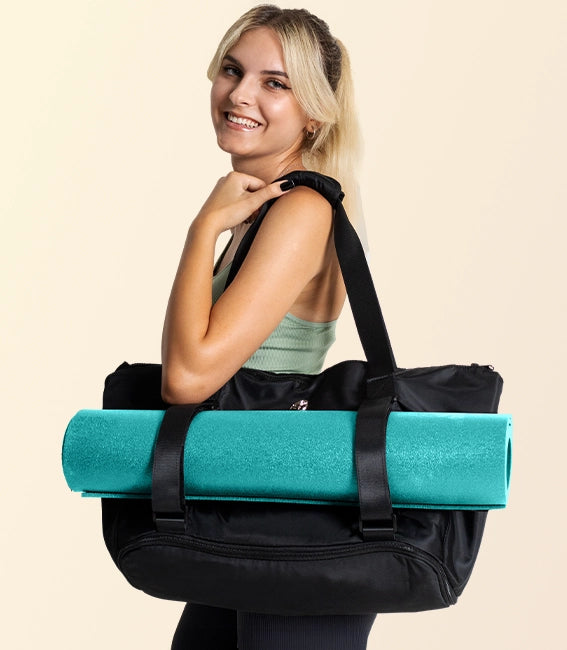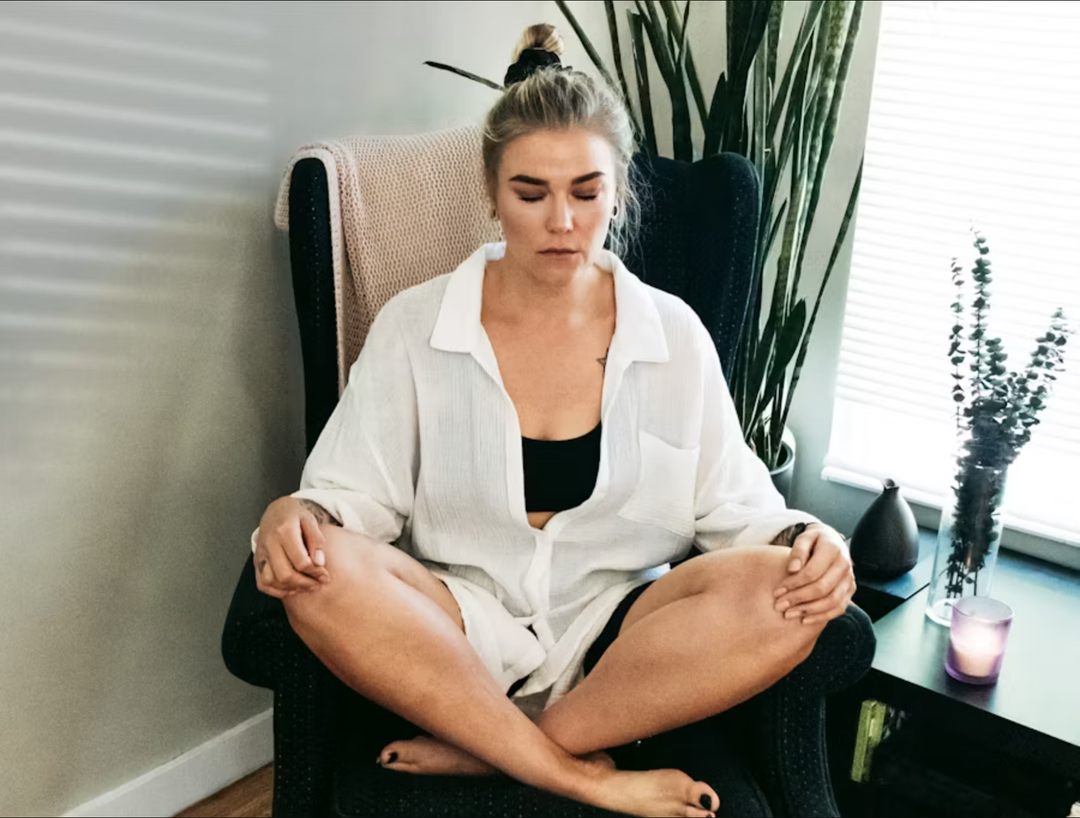
Anxiety is a very real issue in the world. We all suffer from anxiety in some form or another. In the US alone, it is estimated that nearly 40 million people suffer from anxiety related disorders every year. I’ve suffered from anxiety for a number of years and I have finally found something that helps better than anything else; aerial yoga.
What is Aerial or Anti-Gravity Yoga?
Aerial yoga, or antigravity yoga, is a hybrid yoga type, which first came to prominence from 2011 onwards. It’s designed to blend aspects of traditional yoga poses, pilates and sometimes even dance techniques, within an adapted hammock, sling or swing.

Utilising a completely different muscle set to regular yoga, even for the theoretical same pose, and maximising the effects of gravity in a whole new way, aerial yoga is a trending workout that looks set to really take off.
How Can Restorative Aerial Yoga Help With Reducing Anxiety?
The main difference between aerial yoga, and restorative aerial yoga is the height of the hammock from the ground. In traditional aerial yoga, the hammock hangs around hip height from the ground. In restorative aerial yoga, it hangs about a foot off the ground.

Doing so allows us to use the ground for extra support, giving extra opportunity for release and less time needing to be spent for the harder movements or setups. When recovering from injuries or getting started with aerial yoga, this can appeal as a bit of a halfway house into aerial yoga.
When you practise aerial yoga, you will spend a good amount of time either upside down, or almost upside down. Between your body movements and gravity, this will help to stimulate blood flow.
When you can increase blood circulation in the brain, this translates into mood elevation and improved cognitive functions. Studies have shown that just 2 workouts per week of 30 minutes or more will stave off cognitive decline, and importantly help you with a clarity of thinking that can help to keep your anxiety in check.

Many people who practise yoga also practise the art of meditation. Mediation is the process of mindfulness, utilised to be aware of your thoughts and focus on how to direct and control your thoughts.
Many people use it to deal with stresses and pressures in life, including processing feelings of anxiety. Aerial yoga offers many opportunities to combine the 2 elements. Whether it be through a traditional aerial yoga pose, or by simply taking a moment to pause whilst suspended in the air, you will find plenty of mindful moments to help you get your thoughts in order.
10 Restorative Aerial Yoga Poses for Anxiety
1. Aerial Yoga Downward Facing Dog

A lot of yoga poses that are good for your blood flow are also great for your mental health and anxiety.
Downward facing dog has always been a great pose for a number of reasons, for flexibility, for warm ups/ cool downs after physical exertion, and adding in the aerial swing just makes it that bit more effective.
Whenever your heart is above your head gravity does it’s work to help blood flow into areas it can otherwise be slow too, including increased flow to the brain.
2. Aerial Yoga Lunge and Twist

Lung position is one that yogis will be familiar with. However, when doing it in aerial yoga, the hammock will give you a deep tissue massage.
Holding this pose in the twist position will also stimulate your digestive organs and help with blood flow. This will help you to remove toxins while improving your digestion.
One of the great benefits of this pose is releasing tension in your shoulders and chest, which can often show up when experiencing higher levels of stress and anxiety.
3. Aerial Yoga Twisted Chair Pose

Twisted chair pose is another staple of a yoga session. Using the hammock means you can increase the angle further, and enable a deeper tissue massage as well.
When you twist into the position, you’re squeezing out old blood and fluids from the abdominal area and organs, thus making room for the new, oxygenated, nutrient-rich blood when you unwind again. Healthy oxygenated blood means a healthy brain!
4. Sitting in The Hammock

This pose gives multiple benefits. From sitting in the hammock, which is not quite as easy as simply sitting, you will squeeze your core muscles and stimulate the organs. You will feel a detox effect.
The other huge benefit is that once in place, it represents a great pose to practise your mindfulness and help focus your thoughts. Using this pose to bring your workout to a close, or as an interval pose between 2 halves of your workout can work wonders for your anxiety.
5. Lying On Floor With Arched Chest

This pose is great on the joints, with no pressure applied. The movement is arching your chest upwards, whilst keeping the rest of your body, especially your legs, head and glutes on the mat. This helps people with lower back pains, or for kneading out knotted back from stresses of the day.
6. Aerial Yoga Lower Inverted Frog Pose

Once again, playing on the benefits of having your brain below your heart, and legs above your heart, means the blood will flow in a different way than usual. Your brain will get more flow of blood.
This pose in particular releases endorphins too, as we know, endorphins help us feel in a more positive mood. This pose can help with the decompression of your spine, and help the neurotransmitters in your brain.
7. Abdominal Lift

Another great pose for people with back pains. Elongate your spine, strengthen your core, allow the blood to flow with gravity to your abdomen and head, and help feel better, stronger, and more refreshed.
8. Mountain Pose

Stretching out your core, and your back. Stretching out in this position is one of the most primal poses of all mammals, and helps us regain our self. You will need to trust me with this pose, try it out, and you will feel much better.
9. Kneeling Fetal Pose

This pose is excellent for taking stock, letting the blood flow through to your head and abdominal organs, and using the power of mindfulness.
10. Arched Back and Twist

This is quite similar to the abdominal lift pose but with a key twist (excuse the pun)… twisted the abdominal area in one direction, and using the top leg as a balancer. This clears toxins in the same way that wringing a cloth or a towel helps get out all of the moisture. Imagine you are wringing your abdominal organs of their toxins and allowing new, oxidized blood to enter and help make your body healthier.
So Can Restorative Aerial Yoga Help With Anxiety?
Yes, as described the use of gravity will help blood flow, especially into the digestive organs and brain. This can also help to increase the release of serotonin and endorphins to promote positive feelings. And to be honest, the mere fact that you are here, reading this, looking for things to help with anxiety, you will find that your anxiety will be easier to manage already.
And if you have difficulty getting into sleep, check out 15 bedtime yoga poses for a good night’s sleep.





